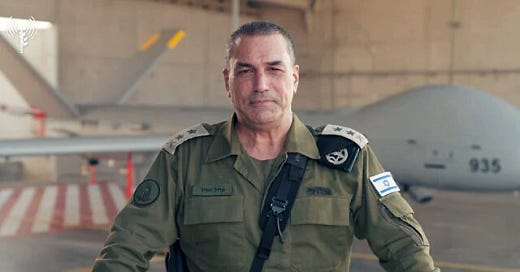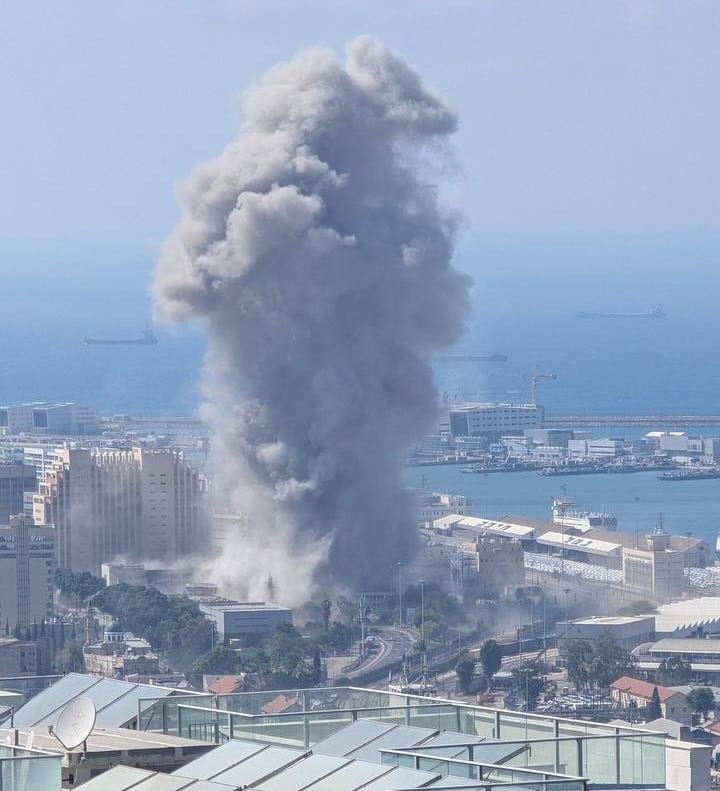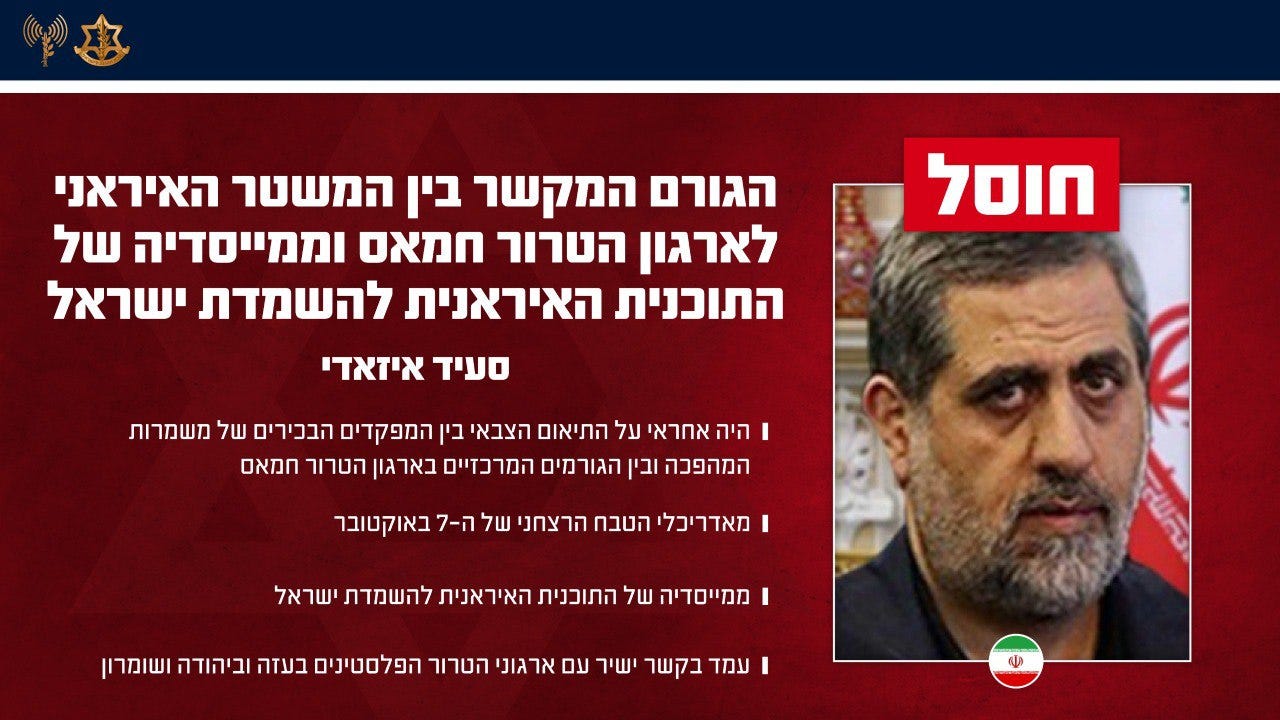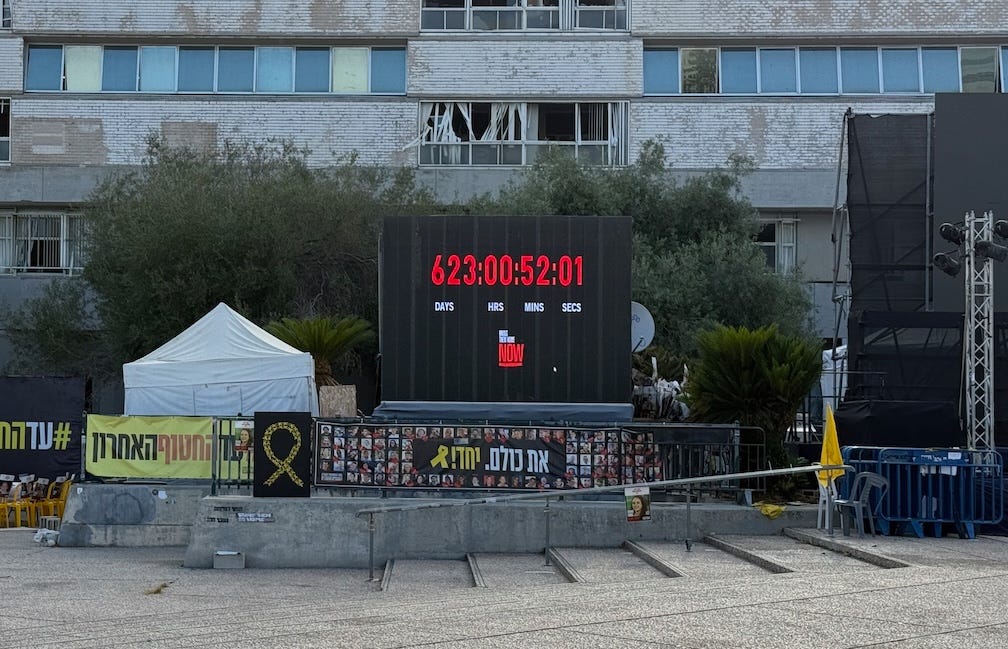DAY 9 OF THE IRAN WAR • DAY 624 OF THE WAR: Fewer Missile Attacks in Past 48 Hours; Zamir Prepares Israelis For Prolonged War; We Must Not Forget Our Hostages in Gaza
Tel Aviv Diary, June 21, 2025
∞–––––∞–––––∞–––––∞–––––∞–––––∞–––––∞–––––∞–––––∞
Our Next ZOOM BRIEFING will take place on Sunday, June 22nd
6 PM Israel Time • 4 PM GB • 11AM EST • 8 AM PST
Invitations will go out on Sunday morning
∞–––––∞–––––∞–––––∞–––––∞–––––∞–––––∞–––––∞–––––∞
When the second ceasefire with Hamas took effect, I decided to pause the Saturday night Tel Aviv Diary updates. Personally, it was a welcome reprieve to have a break from writing for two consecutive days. With the onset of our war with Iran, events are unfolding too quickly not to document them as they occur. So, what follows is a brief—briefer than usual—diary of the past 48 hours in Tel Aviv, and the potential implications they may carry.
Relatively speaking, these past days have been quiet—though even saying that feels difficult. On Thursday night (Friday morning), we anticipated a potential strike, perhaps around 3 a.m.—the same hour Israel’s initial assault began the week before. But 3 a.m. came and went, without incident. I slept through it, unaware, because nothing happened. I got up relatively early on Friday morning, but only because of Milo—not the Iranians.
However, residents of Be’er Sheva area, were jolted awake around 5 a.m. by a missile strike. The missile was not intercepted and caused localized damage.
Most of Friday passed quietly. Life resumed its usual rhythm—running errands to prepare for Shabbat and getting some work done. In my case, I recorded a podcast, with Ehud Haik, which I hope, many of you had the chance to hear. It was released around noon on Friday.
But by afternoon, the calm was abruptly interrupted. Missile alerts sounded across the country—first in the north, then the south, and soon after, in our area, all within minutes. At one point, the alert extended nationwide.
Iran managed to launch approximately 15 missiles—the largest number fired at Israel in quite some time. Three of the missiles struck inside Israel, after evading interception by the Arrow missile defense system.
The most widely reported impact occurred at the port of Haifa. The strike, which generated extensive media coverage due to its location, the number of injuries, and the abundance of photos, left 20 people wounded. From photos, the missile appeared to have landed very close to the piers. Two were seriously injured, while the rest sustained minor injuries. Remarkably, no fatalities were reported. The attack also damaged a nearby mosque
.
A second missile hit a school in Be’er Sheva. As schools were closed at the time, the blast caused only structural damage. A third missile landed in a Tel Aviv suburb but resulted in no serious casualties.
Friday night was relatively quiet. But as has been the case throughout the past eight days, there was a lingering sense—when we went to sleep—that the calm wouldn’t hold. Last night was no exception.
Shortly after 2 a.m., we received an alert warning of an incoming missile strike. We quickly got dressed and headed back down to the shelter. This time, the barrage was smaller—an estimated five to seven missiles. All were reportedly to be intercepted, though debris from either the interceptors or the missiles fell in several locations across central Israel, igniting small fires.
On Saturday morning, the Iranians launched another drone attack, this time deploying up to 40 drones toward Israel. The targets spanned both the North and South—including the Golan Heights, the Beit She’an Valley, and the area surrounding Eilat.
All but one of the drones were intercepted before reaching their targets. The lone drone crashed into a building in Beit She’an. Fortunately, all occupants were in a safe room at the time, and no injuries were reported. It remains unclear whether the drone crashed due to a technical malfunction or was hit and subsequently fell into the building.
Israel now employs a multi-layered drone defense system that has proven highly effective against Iranian threats. Some of the Iranian drones are easier to intercept than those dispatched by Hezbollah due to their larger size—but others are comparable in size. Regardless, the Israeli Air Force has significantly improved its ability to detect and neutralize these aerial threats
.
On Friday, IDF Chief of Staff Eyal Zamir addressed the Israeli public in a brief statement. Zamir assured the nation that the war is progressing well, but also cautioned that this will be a protracted fight. “This will not be quick or easily resolved,” Zamir warned, emphasizing that dismantling the Iranian threat will require both time and patience.
STRIKES ON SENIOR IRANIAN TERROR REGIME LEADERS CONTINUE
Israel has intensified its campaign targeting senior high-ranking figures within the Iranian regime. Today, Mohammad Saeed Izadi, Commander of the Palestine Corps within Iran’s Quds Force, a branch of the Islamic Revolutionary Guard Corps (IRGC), was eliminated.
Additionally, several other Quds Force operatives and a prominent Iranian scientist were also killed.
The Israel Defense Forces (IDF) issued the following statement regarding a number of today’s strikes:
Approximately 30 Israeli Air Force fighter jets carried out a series of strikes earlier today (Saturday), guided by intelligence from the Intelligence Directorate. These strikes employed over 50 munitions to target numerous military installations in the Mahvaz region of southwestern Iran.
As part of the waves of strikes, and through a closed intelligence loop, IAF fighter jets attacked a military site where missile launchers were stored—some of which had previously been used to launch attacks on Israeli territory—along with radar installations used for detection and the creation of an aerial intelligence picture, as well as other military infrastructure belonging to the Iranian regime.
On Friday, the European Union held a meeting with Iran’s Foreign Minister to discuss nuclear matters. Regrettably, the talks were unsuccessful. Iranian officials appears unwilling to make the necessary concessions to secure an agreement that could bring the conflict to a close. Instead, Teheran seems intent on prolonging negotiations, in an effort to delay potential American intervention. Israeli officials are closely monitoring developments in Washington, seeking to gauge the President Trump’s intentions with a mix of anticipation and concern.
HOSTAGES!!!
Regrettably, the ongoing conflict with Iran has pushed the plight of the hostages in Gaza to the margins of public discourse. For the second consecutive Saturday evening, no demonstrations were held in Hostage Square. For the second consecutive week, nationwide protests have been suspended once again
.
While the issue continues to surface in news broadcasts, the plight of the hostages now occupies a diminished place on the national news agenda. Typically, only toward the end of the broadcasts is there a brief acknowledgment that hostages remain in Gaza. Today, these hostages are believed to be held in the tunnel network beneath Gaza with little sign of progress—either in rescue efforts or in negotiations for their release.
Coverage of the situation in Gaza appears to be largely faded from the Israeli media landscape. Most updates now come from the Palestinian Health Ministry, which is affiliated with Hamas. The ministry releases daily casualty figures, though it remains unclear whether these numbers include Hamas operatives, civilians killed by Israeli strikes, or civilians murdered by Hamas itself.








You may find this interesting: https://blogs.timesofisrael.com/trump-wont-save-the-day/